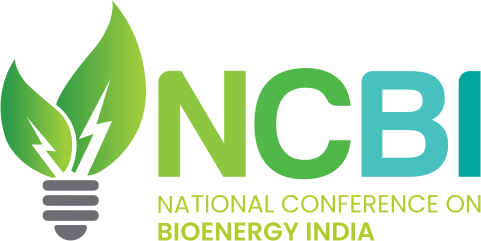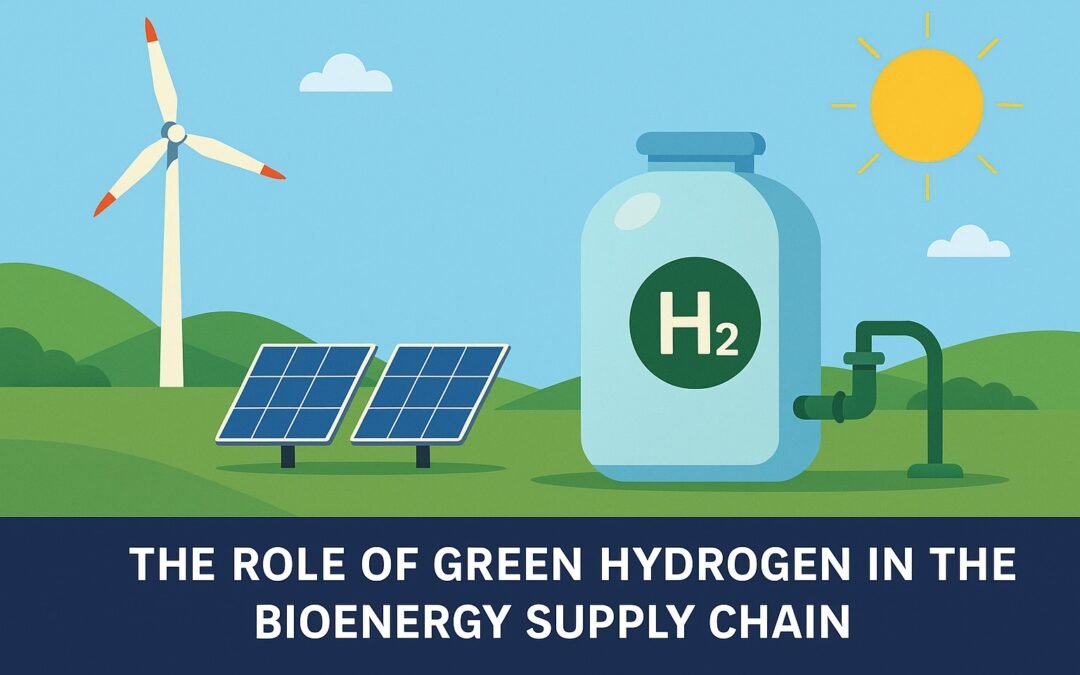Introduction: A New Era in Clean Energy
The global push toward sustainability has never been more urgent. With climate change intensifying and fossil fuels becoming increasingly unreliable, the world is looking for long-term, clean energy alternatives. Among the front-runners in this energy revolution is green hydrogen—a clean, efficient fuel that’s produced by using electricity from renewable sources to split water into hydrogen and oxygen.
In a country like India, where both rural and industrial sectors demand reliable and clean energy, green hydrogen is beginning to play a transformative role. Especially in the bioenergy supply chain, green hydrogen enhances the way energy is stored, moved, and used. From improving rural energy access to decarbonizing industries, this fuel is helping build a more resilient and low-carbon future.
The growing interest is evident at major events like the Bio Energy Expo 2025, the Bioenergy Global Exhibition 2025, and numerous other bioenergy exhibitions in India. These platforms highlight the groundbreaking role of green hydrogen in reshaping the energy landscape.
1: What Exactly Is Green Hydrogen?
1.1 Definition and Process
Green hydrogen is created through a process called electrolysis, where electricity from renewable sources like solar or wind is used to split water into hydrogen and oxygen. Unlike gray or blue hydrogen, green hydrogen doesn’t emit any greenhouse gases during production, making it completely clean.
1.2 Why Green Hydrogen Matters
- Zero Emissions: It’s one of the cleanest fuels available today.
- Energy Storage: It can store surplus renewable energy, making it available when needed.
- Versatile Use: It can power industrial plants, vehicles, and even homes.
- Integration with Bioenergy: It works well alongside bioenergy systems for maximum efficiency.
2: The Bioenergy Supply Chain in India
2.1 From Waste to Energy
India’s bioenergy supply chain is built on converting organic waste into useful energy. This includes:
- Feedstock Sources: Farm waste, forest residue, algae, and municipal solid waste.
- Conversion: Technologies like anaerobic digestion and gasification turn waste into biogas or biofuels.
- Distribution: Energy is bottled as bio-CNG or distributed as electricity.
- Usage: Power generation, cooking gas, and even transport fuels.
2.2 The Indian Context
India’s large agricultural base provides a rich source of biomass. Bio-CNG and biogas are already improving rural energy access. However, issues like inconsistent supply and limited scalability remain. This is where green hydrogen complements bioenergy—offering a dependable, clean fuel that fills these critical gaps.
3: How Green Hydrogen Supports Bioenergy
3.1 Complementary Technologies
Green hydrogen adds value to the bioenergy sector in several ways:
- Boosting Biogas Efficiency: Mixing hydrogen with biogas increases its energy content.
- Energy Storage: When bioenergy is produced in excess, it can be converted into hydrogen for later use.
- Fuel Cells: Green hydrogen can be used in fuel cells to produce clean electricity from bio-waste.
3.2 Making a Difference in Rural Areas
In villages where electricity supply is unreliable, combining green hydrogen with bio-digesters and solar power can:
- Bring stable electricity to homes and farms.
- Power water pumps and small farm equipment.
- Provide a clean and efficient cooking alternative.
4: Industrial Impact of Green Hydrogen
4.1 Making Industry Greener
Industries like steel, cement, and chemicals are some of the biggest carbon emitters. Using green hydrogen along with bio-based fuels can significantly lower emissions in:
- High-temperature Processes: Furnaces and kilns powered by hydrogen.
- Fuel Replacement: Replacing fossil fuels with green hydrogen for various operations.
- Waste-to-Hydrogen Systems: Turning industrial bio-waste directly into hydrogen fuel.
4.2 Fertilizer Revolution
India’s urea plants heavily rely on natural gas. Switching to green hydrogen derived from renewable and bio sources could:
- Reduce dependency on gas imports.
- Make fertilizer production more eco-friendly.
- Cut down overall industrial emissions.
5: Real-World Examples and Innovations
5.1 Projects in India
- Indian Oil’s Panipat Pilot: This plant combines bio-CNG and green hydrogen for cleaner transport solutions.
- NTPC’s Hydrogen Storage Initiative: Enhancing biomass power stations with hydrogen-based storage systems.
- Startup Solutions: New companies are developing mobile hydrogen units linked with agri-waste converters for decentralized use.
5.2 Germany’s HyLand – A Global Benchmark
Germany’s HyLand project combines biogas from agricultural waste with green hydrogen systems for rural transportation. Its success offers valuable lessons for India, especially in terms of integration and scalability.
6: Policies Driving Green Hydrogen and Bioenergy
6.1 National Green Hydrogen Mission
Launched in 2023, this mission has ambitious goals:
- Produce 5 million metric tons of green hydrogen per year by 2030.
- Set up hydrogen production zones near biomass-rich regions.
- Support local manufacturing of electrolyzers and build innovation capacity.
6.2 Supporting Bioenergy Policies
- SATAT Scheme: Encourages bio-CNG production from agri-waste.
- Waste to Energy Program: Offers funding for bioenergy infrastructure.
- Rural Electrification: Promotes bio-hydrogen storage solutions for villages.
These initiatives work hand-in-hand to develop a clean energy ecosystem.
7: Events That Drive Awareness and Growth
7.1 Bio Energy Expo 2025
This event will gather global and domestic leaders to showcase:
- New tech for hydrogen and biomass integration.
- Live demos of hydrogen-biomass hybrid systems.
- Policy workshops with key decision-makers.
7.2 Bioenergy Global Exhibition 2025
International participants will discuss:
- Decarbonizing industry with hydrogen and biomass.
- Next-gen solutions like biohydrogen from algae.
- Village-level hybrid energy models.
7.3 Bioenergy Exhibition in India
Ongoing exhibitions such as:
- REI Expo
- India Energy Week
- Dedicated bioenergy exhibitions in India
These platforms encourage partnerships and showcase innovations, making them critical for industry growth.
8: Roadblocks and Ways Forward
8.1 Key Challenges
- High Initial Costs: Equipment like electrolyzers and hydrogen storage systems are expensive.
- Skill Gaps: Not enough trained professionals in hydrogen handling and safety.
- Infrastructure Gaps: Especially in rural areas, transportation and storage remain major hurdles.
- Lack of Integration: Disjointed efforts between biomass and hydrogen projects.
8.2 Practical Solutions
- Government funding and carbon credit incentives.
- Rural training centers focused on hydrogen skills.
- Pilot projects that demonstrate success on the ground.
- Joint ventures between cooperatives, startups, and research institutions.
9: A Vision for the Future
By 2030, India Could Achieve:
- 25% of rural energy demand met by bio-hydrogen systems.
- 15–20% reduction in industrial fossil fuel use.
- Over 2,000 villages powered by green hydrogen and bioenergy hybrids.
The Future Landscape
- Bioenergy hubs with embedded electrolyzers.
- Zero-waste biorefineries producing multiple clean energy products.
- India as an exporter of green hydrogen, especially to Southeast Asia and the EU.
Conclusion: Leading the Way with Innovation
The integration of green hydrogen into the bioenergy supply chain offers India a once-in-a-generation opportunity. It’s not just about cleaner energy—it’s about transforming lives, boosting rural economies, and leading global efforts against climate change.
Thanks to supportive policies, real-world projects, and the momentum from events like the Bio Energy Expo 2025, Bioenergy Global Exhibition 2025, and other bioenergy exhibitions in India, the future looks bright. With strategic planning and innovation, India can emerge not just as a participant, but as a global leader in the clean energy revolution.




